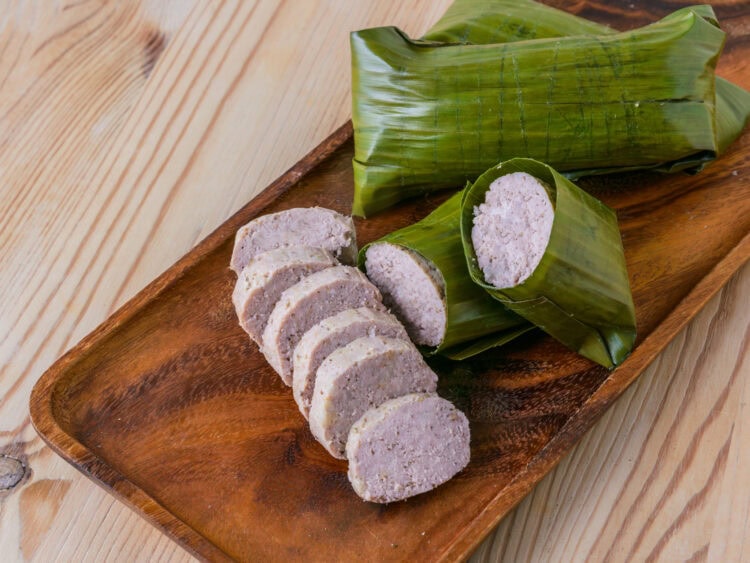A traditional Vietnamese charcuterie recipe perfect for banh mi or banh cuon
Hello everyone! Today we’re back with a charcuterie recipe that’s very, very popular in Vietnam. If you’re a fan of nem chua, then you should like this one.
You can use it in your Vietnamese banh mi sandwiches, in banh cuon style dishes, or even in soups like the famous Bún bò Huế!
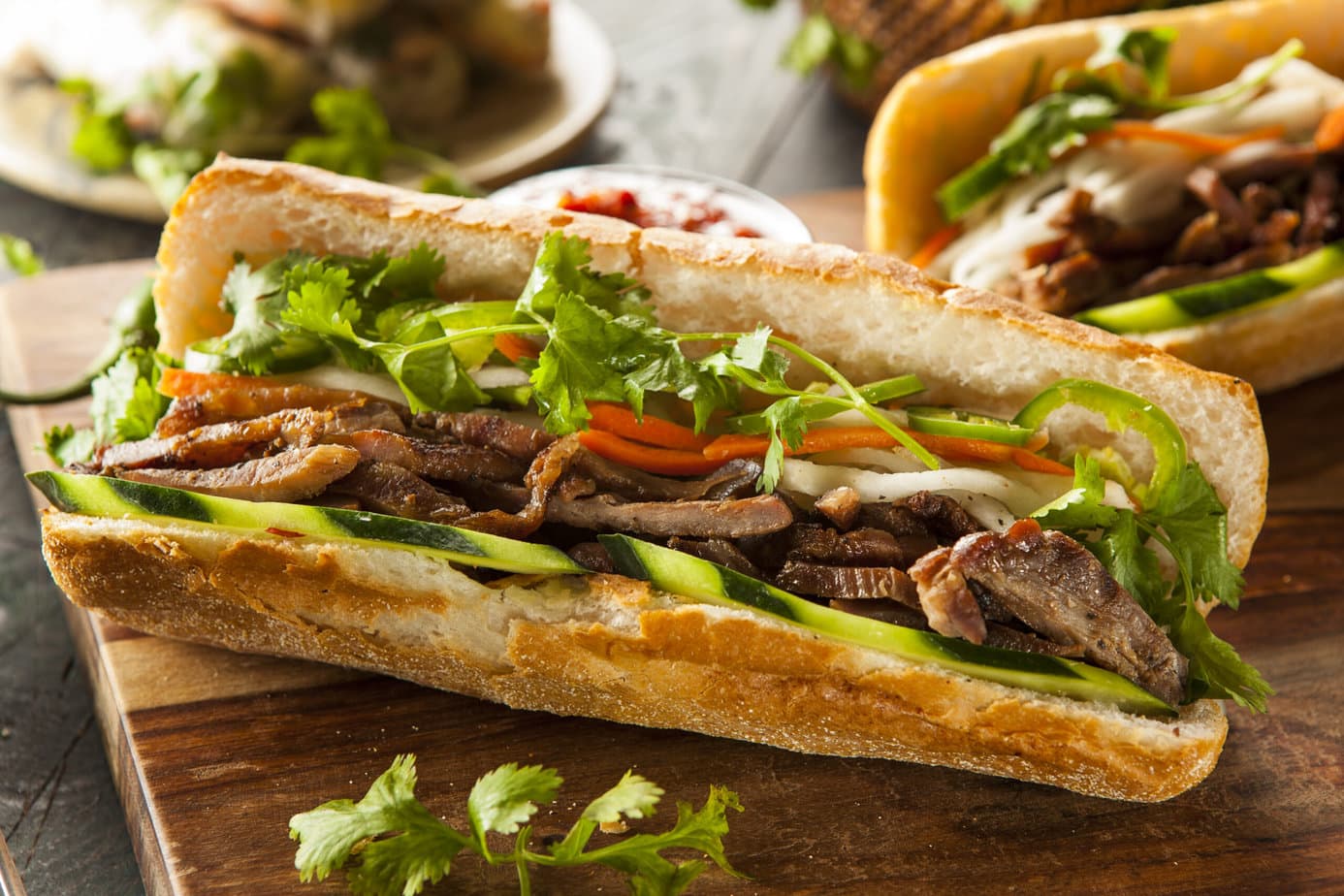
What is Chả Huế?
This food is part of the Vietnamese cuisine category Chả, which refers to all these steamed wrapped meats such as chả lụa that you surely know. Like the Vietnamese omelette too.
But be careful, there’s a nuance and I must be thorough. If you’re in North Vietnam, Chả will refer to fried meat. For example, Chả bò will be fried beef. They make a distinction by using Giò to designate steam cooking. This famous Vietnamese pork pâté will therefore be called Giò lụa.
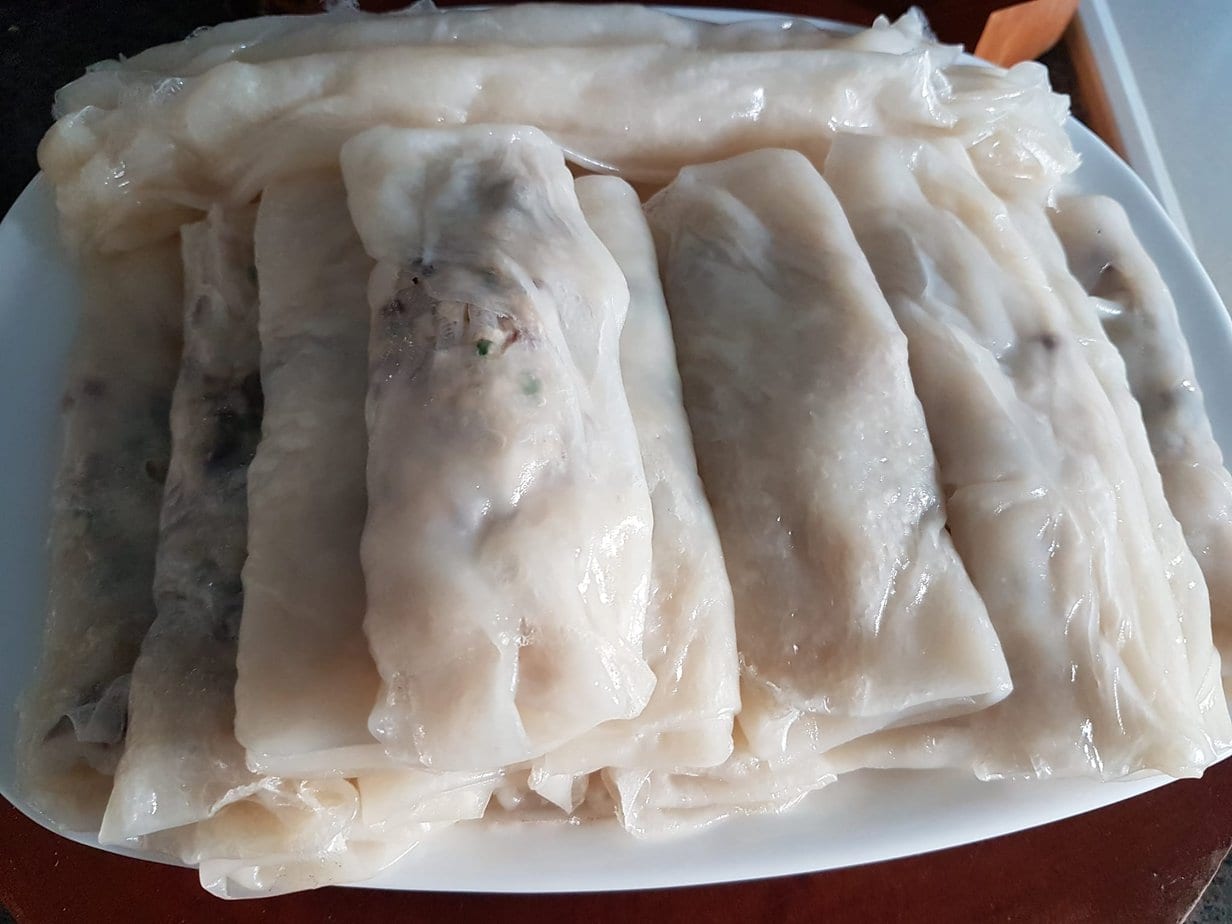
But what about Chả Huế in all this?
It’s a southern shortened way of saying “Steamed pork in the style of Huế city”. The complete technical name should be Chả lụa Huế, and if we’re in the north, Giò Huế or Giò lụa Huế.
The major difference with Chả lụa is the presence of almost whole peppercorns and lots of garlic, otherwise they are essentially identical and interchangeable in your recipes. It will depend on whether you like garlic or not
The main ingredients of Chả Huế
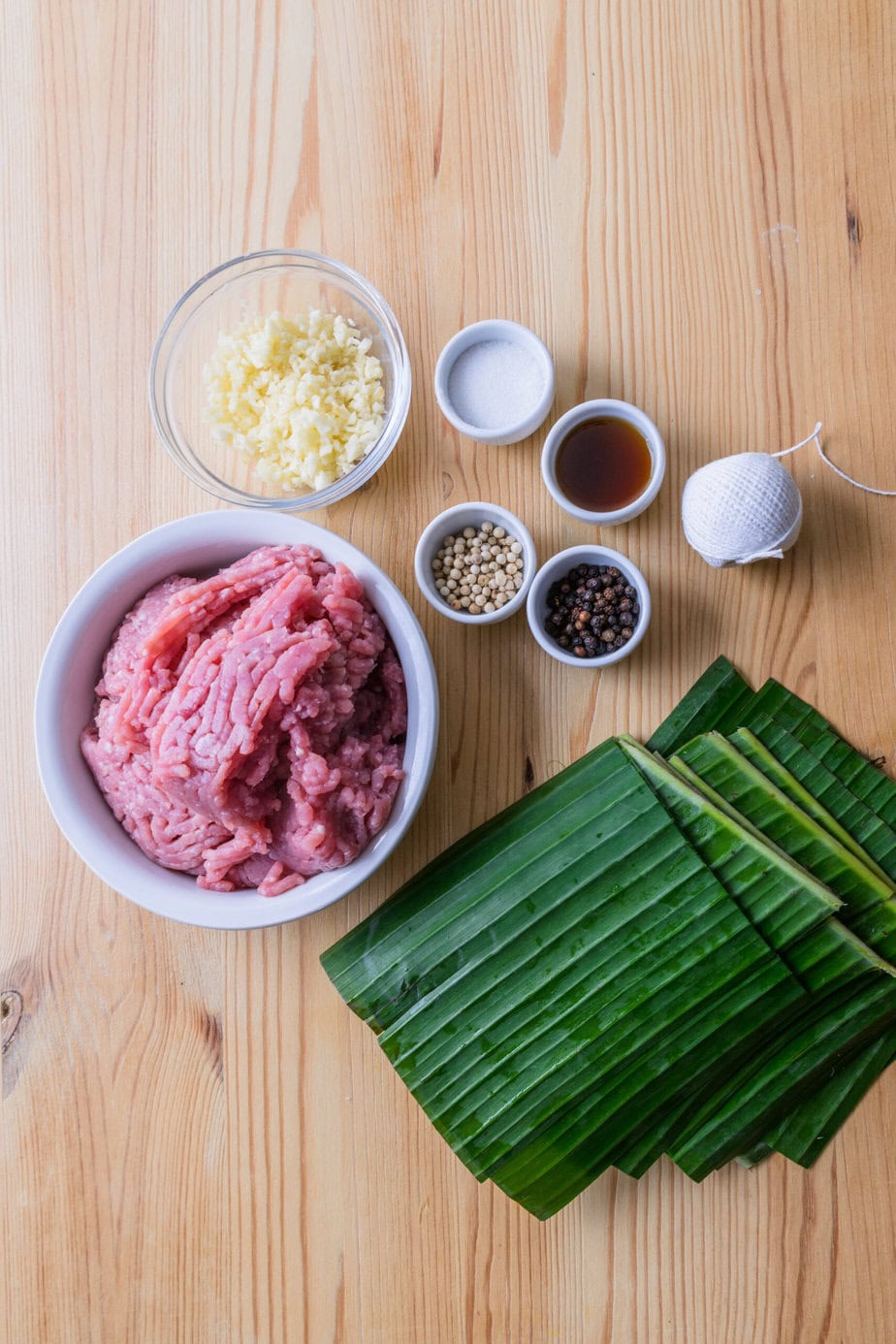
Pork: Use standard ground pork, lean in this case (10% fat) you can alternatively use raw Vietnamese pork paste giò sống. It’s very important to mix the ground meat until it’s really a paste and not just mixed ground meat.
The fish sauce: Essential seasoning that gives a traditional taste, I recommend the Phú Quốc brand but you can use any kind.
Garlic: Yes, there’s a lot. No, it’s not optional.
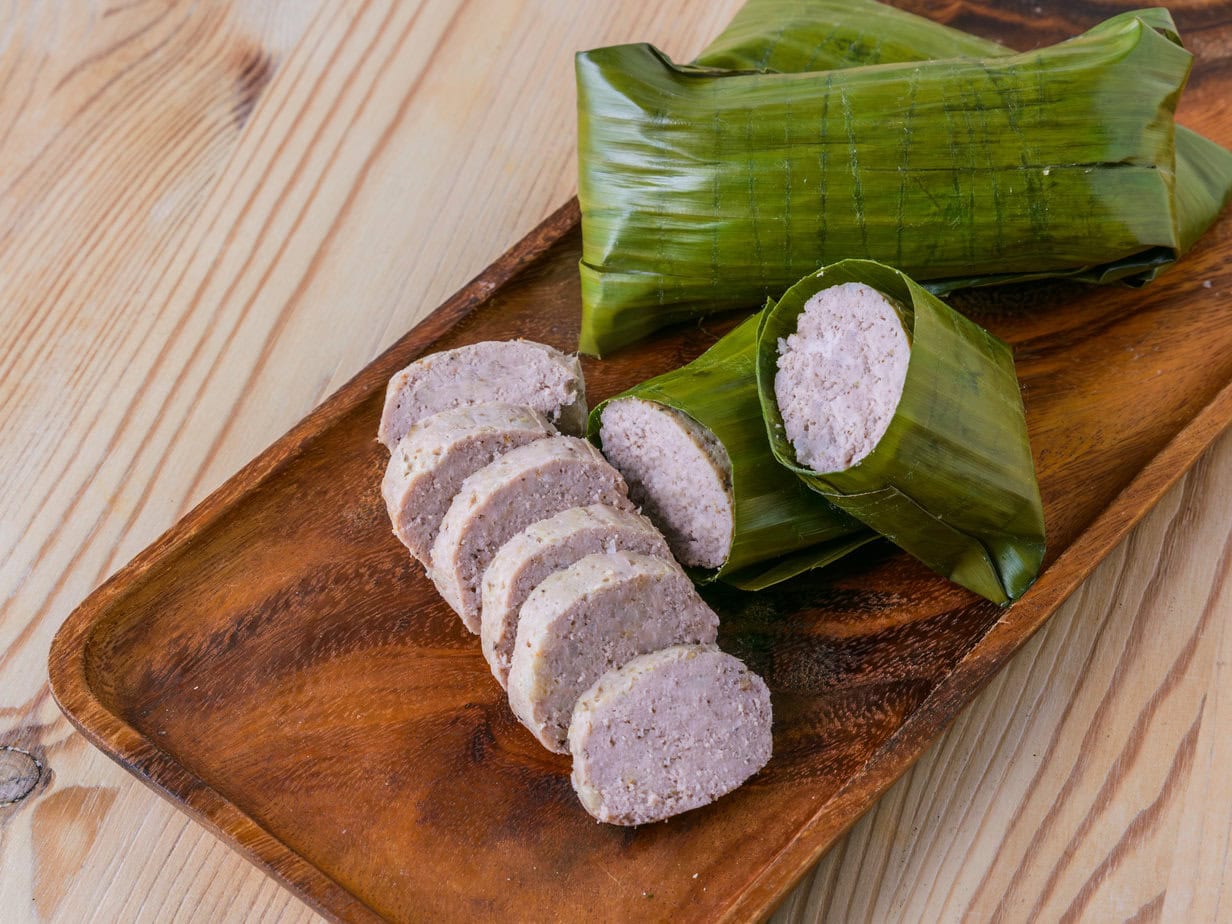
Chả Huế – Vietnamese Garlic Ham
Equipment
- Butcher’s twine, for tying
- steamer basket
Ingredients
- 1 kg ground pork where to buy raw Vietnamese pork paste giò sống
- 1 tablespoon of black peppercorns coarsely crushed
- 1 tablespoon of white peppercorns coarsely crushed
- 2 garlic heads finely chopped
- 1 tablespoon of sugar
- 1 teaspoon of fish sauce
- 24 leaves banana leaf 10 x 15 cm, see notes
Instructions
- Prepare the steamer1 kg ground pork
- Mix all ingredients in a bowl until well incorporated.1 tablespoon of black peppercorns, 1 tablespoon of white peppercorns, 2 garlic heads, 1 tablespoon of sugar, 1 teaspoon of fish sauce
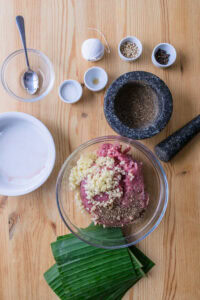
- You really need to obtain a paste, so you have to be thorough! You can use a blender for example. But in this case, add the pepper after obtaining the paste
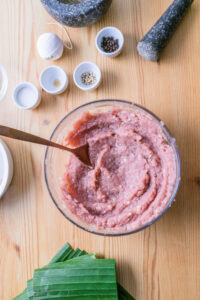
- Take 1 teaspoon of the mixture and heat it in the microwave for about 30 seconds to adjust the seasoning to taste
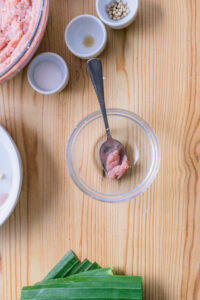
- Add more garlic and/or peppercorns if you want a spicier flavor
- Place about 1 heaping tablespoon of the mixture at one end of the banana leaf24 leaves banana leaf
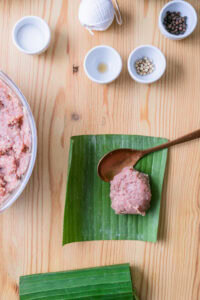
- Fold the sides and roll the pork mixture in the leaf
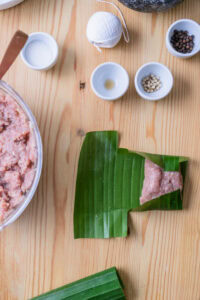
- Seal with twine
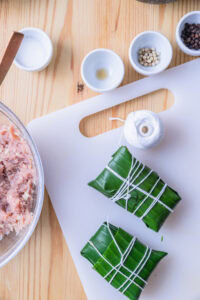
- Steam for 10 minutes, or until thoroughly cooked
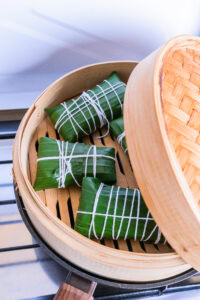
- Enjoy immediately or at room temperature
Notes
Nutrition
Culinary sources
I used the recipe from the English-language blog “The Ravenous Couple” as a base
